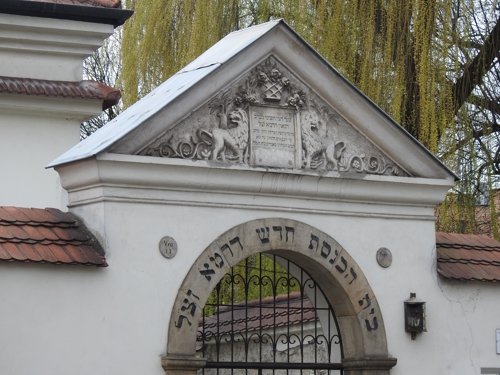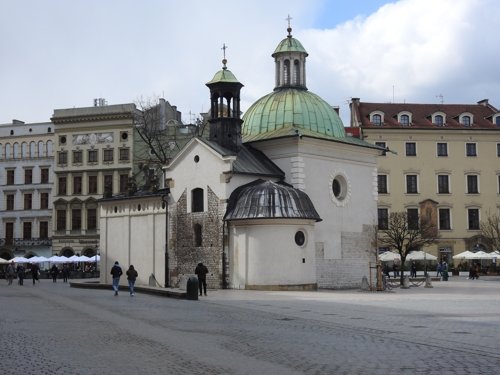Els Slots
Kraków Revisited
In the series “Revisiting the great cities of Europe”, I present Krakow . My first visit to Krakow was in early February 2005, and in the few pictures that I have left the buildings look gloomy and there’s a layer of snow on the ground. So I planned this return trip for April, confident in catching a few warm and sunny Spring days. Oh, how wrong I was! It was freezing. But I came prepared with a list of things to see gathered from previous reviews and other sources. And I read the original nomination file (1978), which has become available since it was attached to the 2010 minor boundary modification .

On my first afternoon, I joined a Free Walking Tour covering Kazimierz. No less than 36 foreign tourists showed up, which confirms Krakow as a popular city trip destination. The tour still milks the success of the Schindler’s List movie which dates from 1993. Fortunately, the group was split in 2 with a guide each. We walked a lot, also to the former ghetto across the river (outside of the WHS core zone). Several 16th and 17th-century synagogues and a cemetery have survived in Kazimierz, although hardly any Jews returned after WWII.
The next morning I set out from my hotel at 8 a.m., lured outside early by blue skies and sun. I started by walking anti-clockwise from Hotel Polonia to Wawel via Planty Park. This park isn’t located in the core of the city but encircles it following the outline of the old defensive walls. To the left are the impressive towers of the city wall and the well-preserved Barbican, when you look to the right (outside the core zone) you’ll see fine Art Nouveau buildings and even some Art Deco.
At Wawel Hill, I skipped the Castle but did enter the Cathedral (24zl). At first, it feels a bit cluttered, as it was expanded over and over again by successive rulers in a variety of styles. But if you take your time you’ll enjoy Sigismund’s Chapel and the Crypt. I also climbed up to see the Sigismund Bell.

Back in the city center, I visited:
- St. Andrew’s Church: the oldest remaining Romanesque building.
- St. Adalbert's Church: pretty one on the main square (2nd photo).
- Basilica of the Holy Trinity: very gothic, also the interior.
- St. Mary’s Church: a masterpiece of brick gothic, with a colourful interior (15zl).
- The exterior of St. Barbara Church next door.
- Collegium Maius: I took the tour in English here (18zl, entrance was free Wednesday afternoon), has a good collection of historical scientific objects.
While walking around, I enjoyed recognizing the special connections Krakow has to offer, such as the Jagiellonian globe (ca. 1510) with its early representation of America (somewhere near Madagascar), the Moorish revival architecture of the Temple Synagogue, the Zygmunt Bell. And I even found some more: an obelisk, Italian architects outside of Italy (Sigismund’s Chapel - "the most beautiful example of the Tuscan Renaissance north of the Alps"), domes also, an equestrian statue at Wawel, Art Nouveau (Palace of Art), theatres (Juliusz Słowacki Theatre).

I spent 1.5 days exploring the city, walking 22 km but did not manage to finish all that I had wanted to see. I really enjoyed my time, so I upgraded my rating from 3.5 to 4 stars. Compared to Prague or Budapest, Krakow is more intimate and has a heavier focus on the medieval. It’s also more ‘itself’: less cosmopolitan but also less sleazy. Its streets and buildings can be a bit grey (especially when the sun doesn’t shine), but it does have pretty Italian-style Renaissance squares, ornate church interiors in different styles, and the magnificent Cloth Hall which easily could have been a WHS on its own merits. Positive from a visitor perspective also is that the historic city center is almost car-free. And when you have to cross a main street, cars will invariably stop at pedestrian crossings or even when you just linger at the curbside – this to the visible amazement of the tourists from countries where this cannot be counted upon.
More on
Els SlotsComments
No comments yet.
